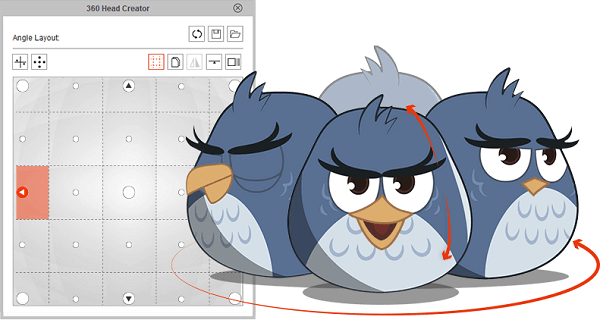

- SPINE ANIMATION CRACK HOW TO
- SPINE ANIMATION CRACK TRIAL
- SPINE ANIMATION CRACK LICENSE
- SPINE ANIMATION CRACK SERIES
Consider the sprite from the above screenshots: You can draw your sprite as a single image if you wish, but once you are done you need to cut it into several different animatable pieces. First, you cut your image up into several different pieces. Creating Spine Ready SpritesĬreating a sprite that is ready to be animated in Spine is pretty close to traditional sprite based animation with two major exceptions.

Now we have a timeline across the bottom of the screen. Notice SETUP changes to ANIMATE and our interface changes slightly. In animation mode, its all about posing our character. Once our Sprite has been assembled and our bones have been arranged ( more on this in a moment ), we can then switch into animation mode by clicking SETUP. This is because you are currently in Setup mode. Notice in the top left corner it says SETUP. There is some additional complexity hidden away behind this menu:īut most of the time, what you see is actually all that you need. You can easily pan and zoom around the display using a combination of RMB and Ctrl + RMB. The primary UI is across the bottom of the screen. The left hand viewport is where the magic happens, this is where you compose your characters and animations, while on the right hand side you’ve got your project hierarchy a scene graph of sorts. It also supports UI scaling, so works well on high DPI displays, something far too many applications suck at, so I also appreciate that. It’s actually an exercise in simplicity which I appreciate.

As is often the case on GameFromScratch, if you prefer a video version one is available here as well as embedded below.
SPINE ANIMATION CRACK TRIAL
There is a free trial available and capable of doing everything we are about to do below except export and run in code. Spine is commercial software, ranging in price from $70 for the essentials version, $300 for professional, and $2200 for enterprise (which is tied to your companies revenue). Additionally, some of the assets I am using in this demonstration are part of asset packs available for purchase and aren’t my creation.
SPINE ANIMATION CRACK LICENSE
If you are bored, the story of how Spine came to be is an interesting read.įull disclosure, I requested a review license in order to get hands-on time with Spine. Since Spine itself is built over top of the LibGDX library (by one of the frameworks founders to boot), therefore I suppose a LibGDX example makes the most sense.
SPINE ANIMATION CRACK HOW TO
Today we are going to look inside Spine, look at the art generation process, how to make sprite graphics that are animation ready, define an animation, then perhaps most importantly, play that animation back in our game engine of choice. If only there was some way to take the 3D worlds bone based animations and apply them to generating 2D art? Well, there is… Spine. There are other techniques such as onion skinning and rotoscoping to aid in the animation process, but it still remains time intensive.

If you have ever done a flipbook animation at the top corner of any of your textbooks, you already have the process of traditional 2D animation down. Generally, the approach here is to generate a sprite sheet, which is a sequence of slightly altered versions of the same character, which played in sequence results in an animation. In the land of 2D art, the process is often quite different. It’s a pretty powerful way to perform animation and every single major 3D application implements IK (and FK – forward kinematics). IK is basically a fancy way of saying “move an end bone and the computer will calculate how all the other bones in the chain will respond” enabling you to animate by positioning the foot for example and the ankle, knee, and hip will rotate appropriately.
SPINE ANIMATION CRACK SERIES
Animations are generally defined by moving a series of bones controlling your mesh, which in turn are powered by a system called inverse kinematics. One of the major advantages of working in 3D is once you have your character modeled and rigged, creating new animations is simply a matter of defining a series of poses on a timeline.


 0 kommentar(er)
0 kommentar(er)
